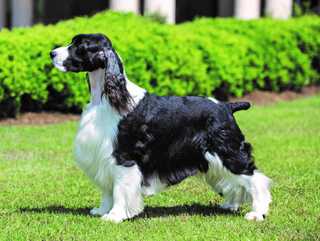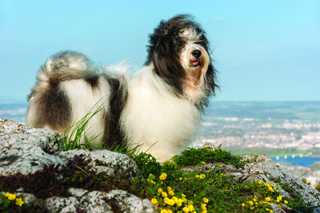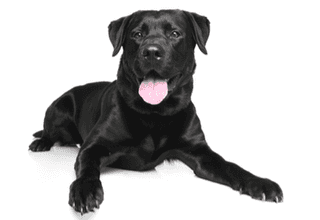
Note: While the breeds in this collection tend to be healthy, individual pets will vary. Please consult the adoption organization for details on a specific pet.
READING TIME: 6 mins, 26 secs.
While there is no way to know how healthy a dog will be, there are healthier dog breeds that carry predisposition genetic make-up enriching their livelihood. Certain canine breeds may experience fewer genetic diseases, skin and coat issues, and bone-related diseases.
- Regular Check-ups: Veterinarian visits help establish a baseline of the dog's health, especially when it comes to the upkeep of vaccinations and maintaining a healthy pet weight.
- Nutrition: Feeding appropriate nutrition to your dog sustains their heart health, skeletal health, and muscle tone. Proper nutrition helps digestion, keeps a healthy skin and coat, and increases immunity, well-being, and longevity in a dog.
- Exercise: Canines require an ample amount of exercise, and a dog thrives from the benefits of it. From strengthening their heart to increasing the circulation in the lungs to promoting healthy digestion and healthy muscle tone, consistent exercising is beneficial to a dog. Exercise relieves anxiety and stress, which increases the self-esteem and happy hormones in your dog, and decreases their risk of obesity, diabetes, and cancer.
| How to Keep Your Dog Healthy |
| 1. Feed a balanced and nutritious diet catered to the specific life-stage of your dog. |
| 2. Keep your dog at a healthy weight and discuss what that is with your veterinarian. |
| 3. Exercise your dog twice daily with 30-minute walks. |
| 4. Schedule veterinarian visits to detect health issues early. |
| 5. Vaccinate your pet against deadly diseases with your veterinarian’s assistance. |
| 6. Keep your pet parasite-free from fleas, ticks, and heartworm by thorough check-ups. |
| 7. Maintain your dog’s dental hygiene by brushing their teeth regularly with a canine toothpaste. Dental hygiene is crucial to a dog's health. |
There’s a long-standing assumption that mixed-breed dogs are less disease-prone than purebred dogs. DNA-testing suggests mixed-breed dogs are less likely than purebreds to develop a recessive disorder; however, they may still be carriers. Of the 152 diseases reviewed, two out of a hundred mixed-breed dogs were at risk of becoming affected, while forty out of a hundred were carriers for at least one of the diseases.
| Recommended Health Tests for Mixed-Breeds: |
| - Ocular Evaluations |
| - Nervous and Circulatory Tests |
| - Regular Veterinarian Check-ups |









